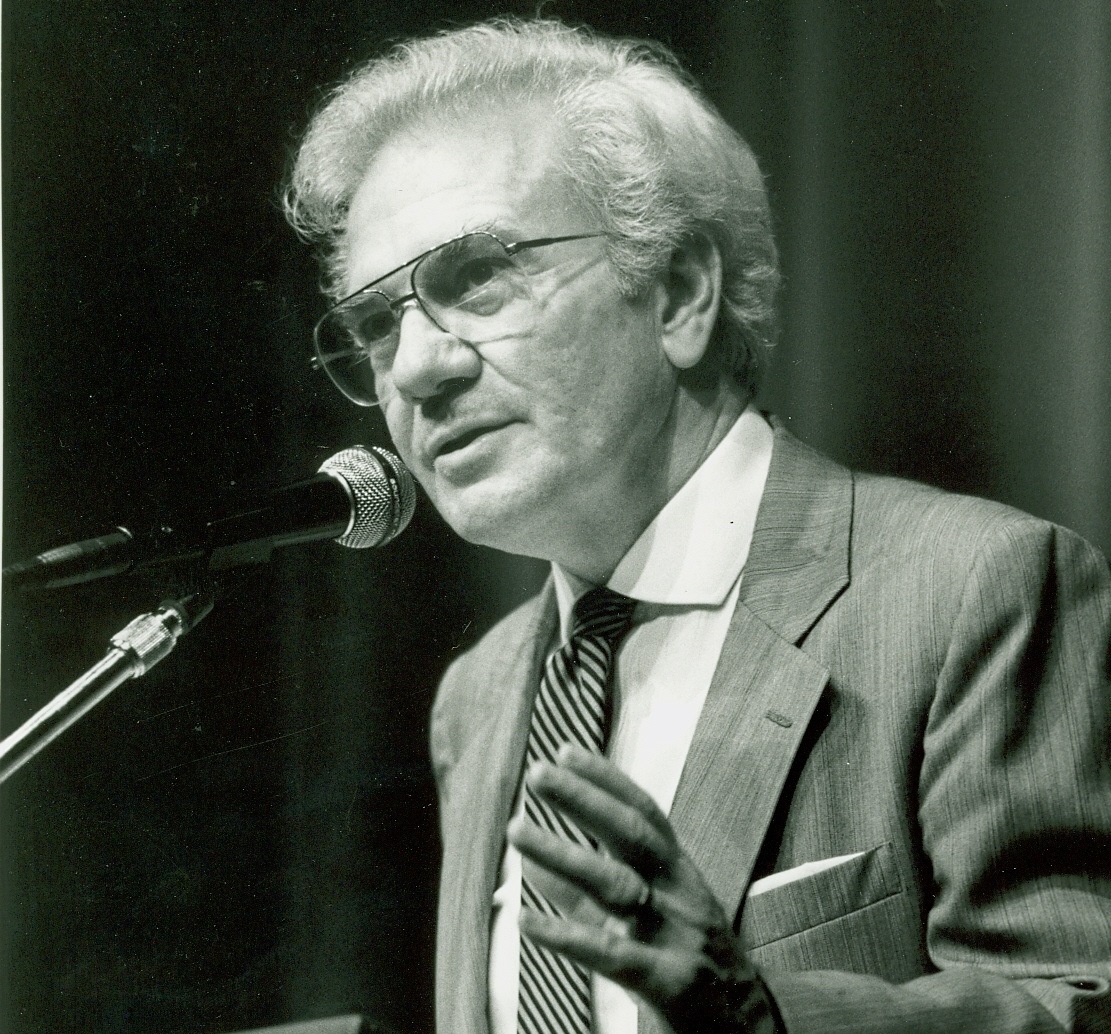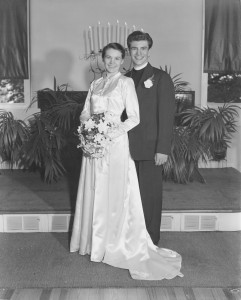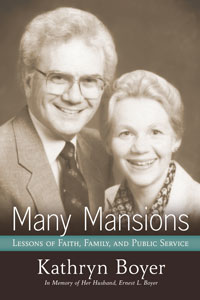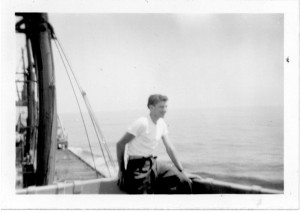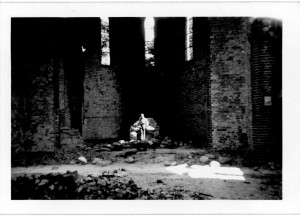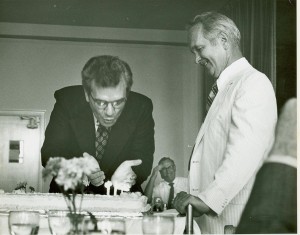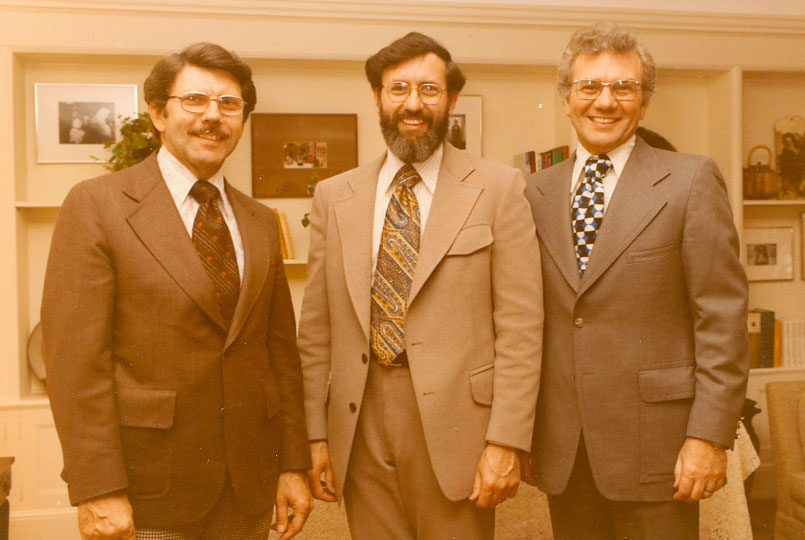
Ernest L. Boyer and his two brothers, Bill and Paul at the SUNY chancellor’s home to celebrate their parents’ 50th wedding anniversary. – BCA
Today’s Photo Friday post shows Ernie Boyer with his two brothers Bill (left) and Paul (middle) at the State University of New York (SUNY) chancellor’s home for their parent’s 50th wedding anniversary in 1974. This photo is an example of the strong connection this family shared. In fact, at various points throughout his career, Ernie received professional support from his family. Today’s post focuses on Ernie’s brother Paul and the work he did to support his brother.
Paul Boyer was an author, history professor, and director of the Institute for Research in the Humanities at the University of Wisconsin-Madison. Even though Ernie had a host of editors, including his wife, who lived closer than Wisconsin to review drafts of future publications or speeches, he still sent some work to his brother, believing in the wisdom he could provide. When Paul received this work from his brother, he would make grammatical edits, recommendations, comments of his overall impression of the work, and a log of how much time he spent reviewing the work. On one occasion, Paul spent over 15 hours reviewing a speech entitled “Civic Education: Some New Thoughts on a Familiar Subject”, which Ernie delivered at the Chancellor’s Colloquium at the Los Angeles Community Colleges. In a letter sent to Ernie regarding his review of the speech Paul writes:
Here is a draft along the lines we discussed. I hope you find it helpful for your Los Angeles speech. It’s probably a little longer than you need, but some of the earlier historical material could be cut back if needed, such as some of the quoted passages on pp. 2-3, and some of the stuff on the 1920s, on p. 5-6. I thought though that in a speech in which you speak of the importance of learning from the past, it would be useful to have a fairly solid historical grounding for what you say.
You will note that on p. 12-13, and again on pp. 16-17, I have woven in some passages and sentences from A Quest for Common Learning and Higher Learning in the Nation’s Service. I assume it isn’t plagiarism if you quote yourself without footnotes, but if the speech should be published you might want to add footnotes at these points indicating that this material is based on those two books.
This excerpt exemplifies the reflective insight Paul was able to provide for Ernie and how much Ernie valued his brother’s opinion. Yet, these feelings were also reciprocated. In a book Paul wrote entitled Mission on Taylor Street: The Founding and Yearly Years of the Dayton Brethren in Christ Mission he acknowledges Ernie for providing “information, assistance and encouragement.” Therefore, today’s post pays tribute to Paul Boyer’s personal accomplishments, as well as what seems to be a recurring theme here at Service Fulfilled, which is the love that the Boyer family had for one another and how it overflowed into their professional work.
To see more examples of Paul’s correspondence with Ernie, click here.
